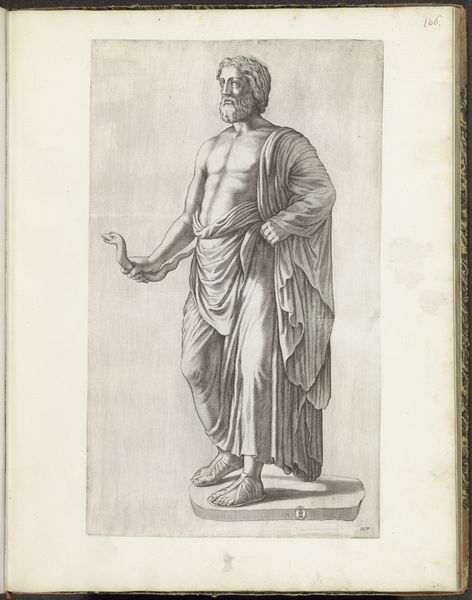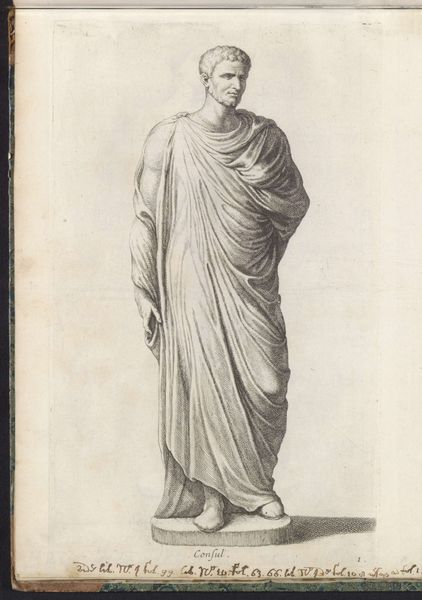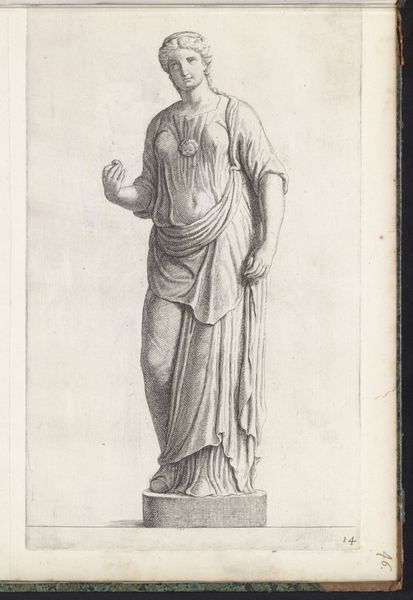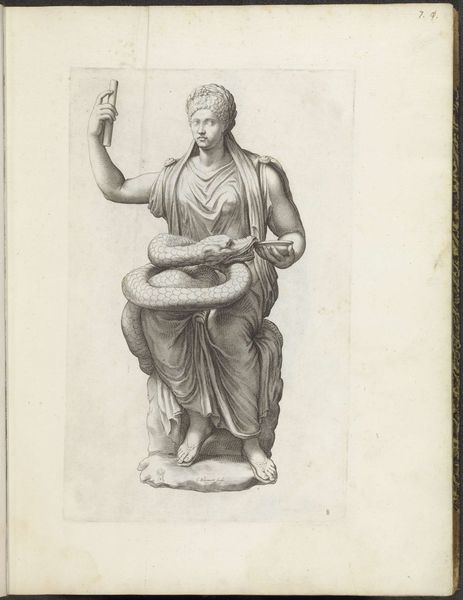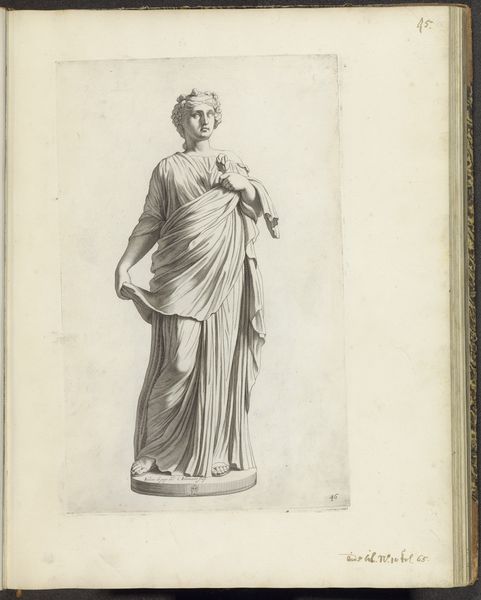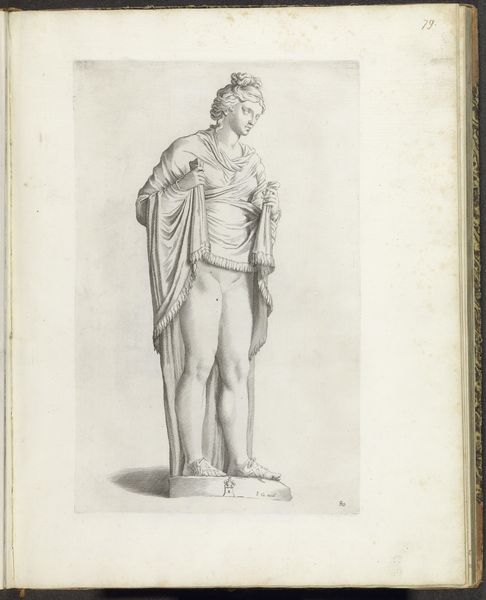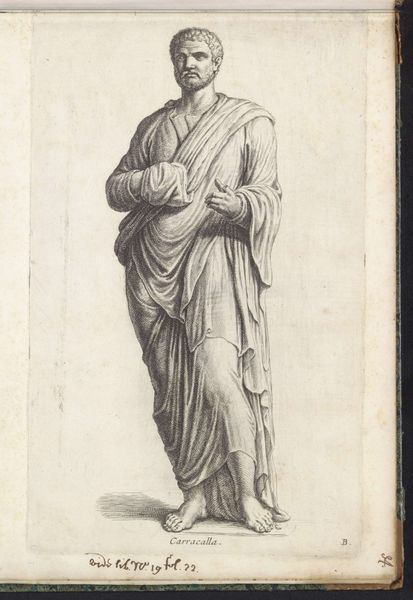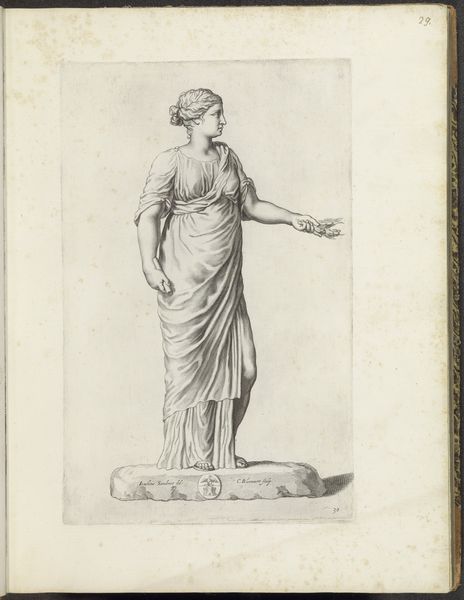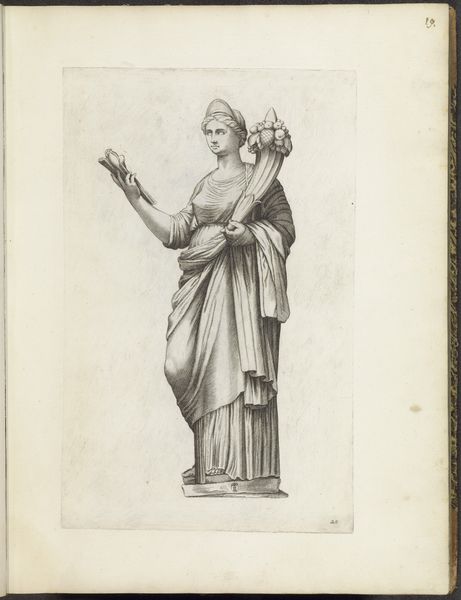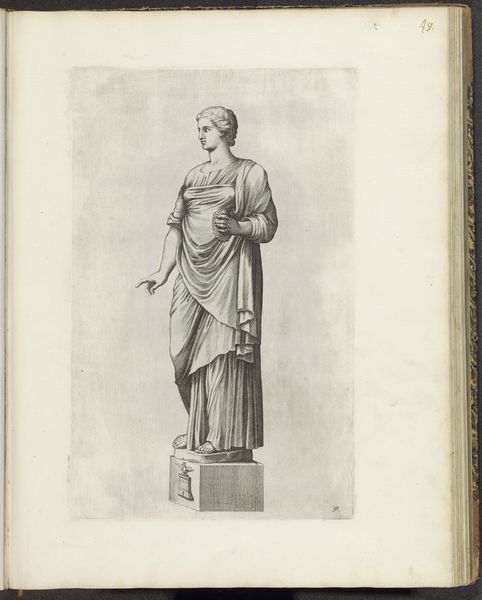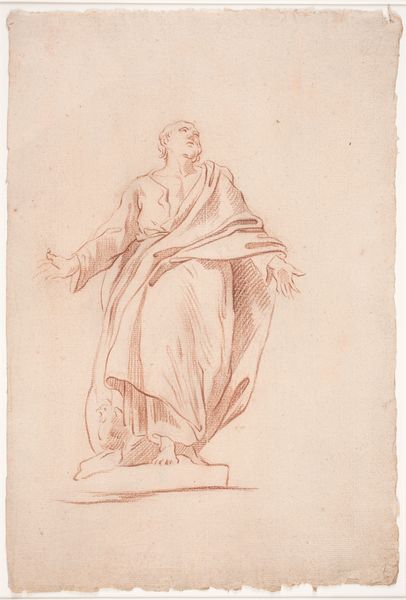
drawing, ink
#
portrait
#
drawing
#
toned paper
#
light pencil work
#
pen sketch
#
pencil sketch
#
classical-realism
#
figuration
#
romanesque
#
personal sketchbook
#
ink
#
ink drawing experimentation
#
classicism
#
ancient-mediterranean
#
pen-ink sketch
#
pen work
#
sketchbook drawing
#
history-painting
#
sketchbook art
Dimensions: height 371 mm, width 231 mm
Copyright: Rijks Museum: Open Domain
Curator: We're looking at a drawing currently held at the Rijksmuseum called "Statue of a Seated Consul" created by Cornelis Bloemaert between 1636 and 1647. Editor: Immediately, I see the pose evokes contemplation and perhaps even weariness. The light pencil work, balanced with the sharper pen lines, renders the consul both human and monumental. Curator: Yes, there's a studied balance. Notice how Bloemaert uses hatching to create a sense of volume and texture in the consul's robes, grounding him despite the apparent lightness of the toned paper. The figure's posture and garment point to classical ideals of leadership and civic duty. Editor: The hand gesture seems particularly symbolic. Is he offering something, or perhaps making a point in a grand, rhetorical gesture? Curator: Iconographically, that open hand can be interpreted in a number of ways – as a symbol of generosity, of justice, or even simply a gesture of speech. Given his status as a consul, those associations with law and oration seem quite pertinent. And I note the scroll held in the other hand may function to convey that meaning too, signifying classical knowledge and tradition. Editor: It’s compelling how the symbolism feels both specific and ambiguous. Even the choice to render him seated elevates the figure, embedding associations of authority and wisdom within the composition itself. Curator: Precisely! The careful rendering of light and shadow across the sculpture allows Bloemaert to highlight not just the figure's physical form, but also the gravitas of the subject. The figure feels as though rooted to that ground plane, his symbolic presence occupying space through his body and civic identity. Editor: This examination really enriches our understanding of both Bloemaert’s artistry and the classical values he invokes. It makes you think about the echoes of that era in contemporary symbols of power. Curator: Absolutely, it's a reminder that forms and gestures from antiquity still resonate. By delving into Bloemaert's artistry, we reveal layer upon layer of meaning embedded within even a seemingly straightforward representation.
Comments
No comments
Be the first to comment and join the conversation on the ultimate creative platform.
